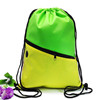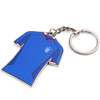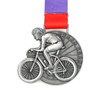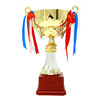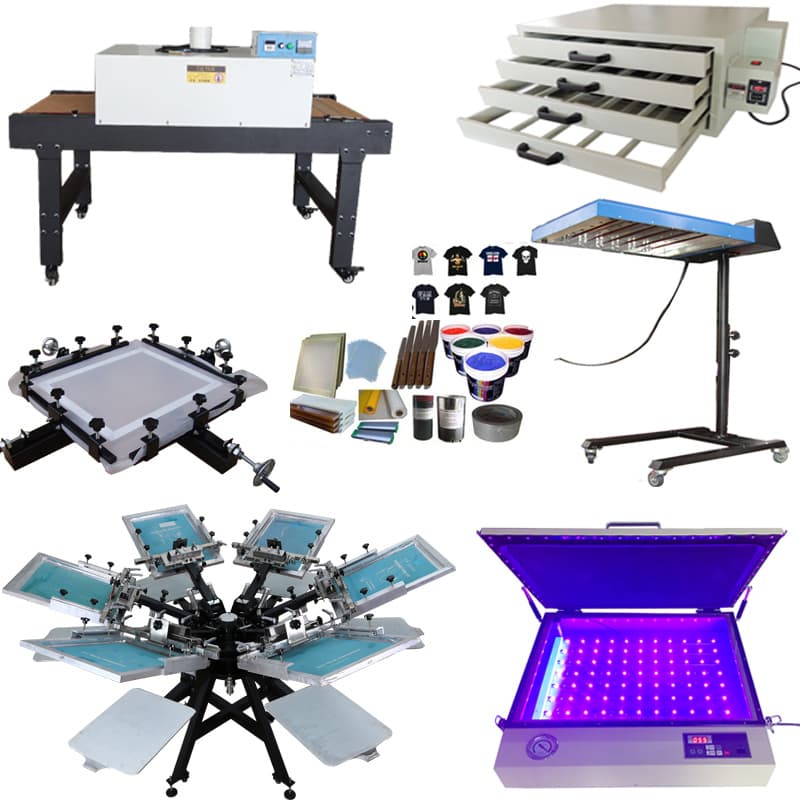
The Ultimate Guide: Screen Printing Process
Introduction: What is Screen Printing?
Screen printing is the production of screen printing plates by hand-engraved lacquer film or photochemical plate making using silk, synthetic fabrics or metal screens taut on a screen frame. Modern screen printing technology, the use of light-sensitive materials through photographic plate making methods to produce screen printing plates.
Screen printing is a versatile printing technique that can be used to create a wide variety of prints. The process involves using a mesh screen to transfer ink onto a substrate, and it can be used to create prints on paper, fabric, or other materials.
Screen printing is an easy and inexpensive way to print your own T-shirts, posters, and other items. Screen printing equipment is simple to operate and easy to make plates. You can buy a screen printing kit for around $100, and the supplies are relatively inexpensive.
Screen printing is a process of applying ink to a surface using a mesh screen. The ink is forced through the screen by a squeegee, and the image is created by the areas of the screen that are not blocked by the mesh. This process can be used to produce images on a wide variety of surfaces, including cloth, paper, plastic, and metal.
While screen printing offers many advantages over other methods of printing, it also has some significant drawbacks in terms of environmental protection. First of all, the plat used in screen printing contains solvents that can pollute the air and water.
In addition, the ink itself can be toxic and harmful to both humans and wildlife. Finally, the production of screens itself requires large amounts of energy, which can contribute to climate change.
History of Screen Printing
Screen printing first originated in China, more than two thousand years ago. As early as the Qin and Han dynasties in ancient China, there was a method of pinch-jewel printing. By the Eastern Han Dynasty, the pinch-jewel batik method had become popular, and the level of printed products had improved.
To the Sui dynasty during the Da Ye years (605 ~ 618 AD), people began to use the frame with a silk screen for printing, so that the clip jie printing process developed into screen printing. According to historical records, the Tang Dynasty, the court wore exquisite clothing on the use of this method of printing.
In the Song Dynasty, screen printing was developed again, and the original oil-based paint used was improved, and starch-based gum powder was added to the dye to make it into a paste for screen printing, making the colors of screen printed products more brilliant.
Screen printing is one of the great inventions of China. The American magazine Screen Printing had this to say about Chinese screen printing technology: “There is evidence that the Chinese used horsehair and stencils two thousand years ago.
Clothing from the early Ming Dynasty attests to their competitive spirit and processing techniques.” The invention of screen printing contributed to the development of human material civilization worldwide.
Today, 2000 years later, screen printing technology continues to evolve and improve and is now an indispensable part of human life.

The principle of screen printing
Screen printing consists of five major elements, namely screen printing plate, squeegee, ink, printing table and substrate. The basic principle of screen printing is: the use of screen printing plate graphic part of the mesh through the ink, non-graphic part of the mesh impervious to the basic principle of printing.
Printing in one end of the screen printing plate into the ink, with a squeegee on the screen printing plate ink parts to apply a certain pressure, while moving toward the other end of the screen printing plate. Ink in the movement of the squeegee from the graphic part of the screen hole extrusion to the substrate.
Due to the viscous effect of the ink and make the print fixation within a certain range, the printing process, the squeegee is always in line contact with the screen printing plate and substrate, contact line with the squeegee to move and move, because the screen printing plate and substrate to maintain a certain gap between the screen printing plate through its own tension and produce a reaction force on the squeegee, the reaction force is called rebound force.
Due to the role of rebound force, so that the screen printing plate and the substrate is only mobile line contact, while the other parts of the screen printing plate and the substrate for the disengaged state. So that the ink and screen fracture movement, to ensure the printing size accuracy and avoid rubbing dirty substrate.
When the squeegee scrapes the entire page and then lifts, the screen printing plate also lifts, and the ink is lightly scraped back to the initial position. This is a printing stroke.
advantages of screen printing
The following 4 points are the difference between screen printing and other printing, but also the characteristics and advantages of screen printing. Understanding the characteristics of screen printing, in the selection of printing methods, you can take advantage of the advantages of screen printing to highlight the advantages of screen printing, in order to achieve more desirable printing results.
- Strong adaptability of printing
Lithography, letterpress, gravure printing three major printing methods can generally only be printed on flat substrates. Screen printing can not only be printed on flat surfaces, but also on curved surfaces, spherical surfaces and concave and convex substrates for printing.
On the other hand, screen printing can be printed not only on hard objects, but also on soft objects, regardless of the texture of the substrate. In addition, in addition to direct printing, screen printing can also be used as needed to print indirectly, that is, screen printing on gelatin or silicone plates, and then transferred to the substrate.
Therefore, it can be said that screen printing is highly adaptable and has a wide range of applications.
- Thick ink layer, strong three-dimensional sense, rich texture
Offset printing and letterpress ink layer thickness is generally 5 microns, gravure printing is about 12 microns, flexo (aniline) printing ink layer thickness of 10 microns, while the thickness of the ink layer of screen printing far exceeds the thickness of the above ink layer, generally up to 30 microns or so. Special printed circuit board with thick screen printing, ink layer thickness can be up to 1000 microns.
Printed with foaming ink Braille dot Yu, the thickness of the ink layer after foaming up to 300 microns. Screen printing ink layer thick, rich texture of the print, a strong sense of three-dimensional, which can not be compared to other printing methods. Screen printing can not only single-color printing, but also can be set and add screen color printing.
- Strong light resistance and vivid color
Since screen printing has the characteristics of leakage printing, it can use all kinds of ink and paint, not only can use paste, adhesive and various pigments, but also can use coarse-grained pigments. In addition, screen printing inks are easy to mix, for example, light-resistant pigments can be put directly into the ink mix, which is another major feature of screen printing. Screen printing products have the great advantage of high light resistance.
Practice shows that, according to the maximum density range measured by using black ink on coated paper after one embossing, offset printing is 1.4, letterpress printing is 1.6, gravure printing is 1.8, while the maximum density range of screen printing is up to 2.0.
Therefore, the light resistance of screen printing products is stronger than that of other types of printing products, which is more suitable for outdoor advertising and signage.
- Large printing area
At present, the general offset printing, letterpress printing and other printing methods to print the maximum size of the area for the full size, more than the full size of the sheet, it is restricted by mechanical equipment. Screen printing can be printed on a large area, today’s screen printing products can be up to 3 meters × 4 meters, or even larger.
Applicable performance of screen printing
Screen printing, like other printing methods, requires accurate reproduction of the original artwork and tones.
In principle, the originals used for screen printing are not very different from those used for other printing methods, but in the specific plate making and printing practice, the requirements are different, mainly due to the characteristics of screen printing.
In particular, because the screen printing ink layer is thick, bright colors, so in the selection of the original and plate making to take full account of the special effects of screen printing.
In addition, screen printing with the original graphic lines, dot precision requirements and ordinary printing methods used in the original requirements are different. If the original lines, dots are very fine, the use of screen printing plate is a very difficult thing.
Therefore, screen printing technology is not suitable for reproducing fine lines, dots of the original. In the choice of printing methods to fully consider the characteristics of various printing. Even in the screen printing plate should also pay attention to the selection of the appropriate mesh, in order to achieve the full reproduction of the original purpose.
Screen printing is more suitable for the performance of text and lines of bright monochrome into a set of color originals, but also suitable for the performance of contrast, clear layers of color originals.
Through the special effects of screen printing, the reproduction has a rich expressive power, through the rich and thick ink layer and the contrast of light and dark tones, fully express the texture of the original content and three-dimensional effect.
There are two types of screen printing photographic original: reflective original and transmissive original, which are usually used mainly for reflective original. Most of the color photos use transmissive originals.
5 features of screen printing
The features of screen printing are summarized in the following areas.
- Screen printing can use many types of inks. That is: oil-based, water-based, synthetic resin emulsion type, powder and other types of ink.
- soft layout. Screen printing layout is soft and has a certain degree of flexibility is not only suitable for printing on soft items such as paper and fabric, but also suitable for printing on hard items, such as: glass, ceramics, etc.
- Silkscreen printing with low embossing force. Because the pressure used in printing is small, it is also suitable for printing on fragile objects.
- The ink layer is thick and has strong covering power.
- Not subject to the limitations of the shape of the surface of the substrate and the size of the area. As can be seen from the foregoing, screen printing can be printed not only on flat surfaces, but also on curved surfaces or spherical surfaces; it is suitable for printing not only on small objects, but also on larger objects. This printing method has great flexibility and wide applicability.
Methods of Screen Printing
Screen printing usually has two kinds, namely manual printing and mechanical printing.
Manual printing means that from the renewal of the paper to the receipt of the paper, the printing plate up and down the movement, scraper scraper printing are manual operation.
Mechanical printing refers to the printing process is completed by mechanical action. It is divided into semi-automatic and fully automatic printing, semi-automatic refers to the substrate into and out of the manual operation, printing by mechanical completion; fully automatic refers to the entire printing process is completed by machinery.
How is screen printing classified?
Screen printing not only adapts to general paper printing, but also has a very wide range of adaptability. For example: ceramics, glass, printed circuit boards, etc.
According to the texture of the substrate, printing is not the same, although there is an inseparable interlink between the various series, but because the substrate material is different (i.e., different chemical and physical properties), each has its own special characteristics.
Therefore, people are usually divided into different substrates: paper printing, plastic printing, ceramic printing, glass printing, circuit board printing, metal printing, textile printing and other major categories. This forms their own relatively independent printing system.
10 applications of screen printing
The range of applications for screen printing is very wide. Any kind of object other than water and air (including other liquids and gases) can be used as a substrate. Some people have said this about screen printing: If you want to find the ideal printing method for printing purposes on earth, it is most likely the screen printing method.
Specifically screen printing is mainly used in the following areas.
- Paper printing
Fine art printing – advertising, picture magazines, calendars, lantern paper, etc.
Trademark printing
Transfer printing
Packaging printing
Building materials printing – gluing wallpaper, etc.. - Plastic Printing
Plastic soft sheet – vinyl toys, school bags, plastic bags, etc.
Plastic marker plate – fake metal composite materials and various marker plates.
Production parts – instrument parts. - Wood products printing
Crafts – lacquerware, wooden crafts, toys.
Processing semi-finished products – sporting goods, wooden boards, ceilings, road signs, signboards, fake metal wrenches, billboards, etc. - Metal products printing
Metal cylinders, metal utensils, metal products. - Glass and ceramic products printing
Glass – mirrors, glass plates, cups, bottles, etc.
Ceramic – utensils, handicrafts. - Signage
Text description plates, dials, formed articles. - Circuit board printing
Printed circuit boards, substrates for civil or industrial use, thick film integrated circuit boards. - Printing and dyeing
Printing and dyeing – flags, uniforms, towels, handkerchiefs, shirts, undershirts, knitted goods, pouches bags etc.
Other printing – pockets, shoes, numbered cloth and various bags, backpacks, carrier bags, school bags, etc. - Leather products printing
Leather products - Printing of electronic products
Printing of printed circuits, thick film integrated circuits, membrane switches and other components

